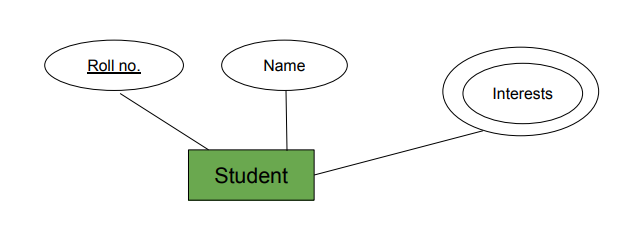
|
|
Attributes are significant in DBMS as it deals with the organization and formatting of data. Of all the attributes, multivalued attributes are somewhat different and they have to be understood properly. To help us understand the above idea in the subsequent sections of this article, we will also explain related key terminologies, and how multivalued attributes work with the help of examples. Key Terminologies1. AttributeAn Attribute can be a certain characteristic or ability that the entity may have. In the case of a database table, it is a distinct column that describes one aspect of a record, for example, a student’s identity or the cost of an item. 2. EntityA real object that has a real-life meaning and which may exist in reality and may be stored in a database. For example, an “Order” entity may specify details of what the consumer has purchased. When it comes to relational databases, one is likely to find an entity in relation to a table. 3. RelationIt is a connection or interaction between two or more entities. This outlines how various entities are related. When it comes to developing relations in a database most often keys called foreign keys are used. A foreign key is a field present in a table that is used to refer the primary key of another table. 4. Primary KeyPrimary Key can act as a unique identifier of an entity within our database. It can help to prevent redundancy of the records as well as take a shorter time to look for a particular piece of information. For example, consider a library management system – The “ISBN” number on the books is usually used as the primary key that can be used to retrieve information about any specific book. What are Multivalued Attributes?In contrast to its single-valued counterpart, a multivalued attribute allows more than one value to be stored for a single entity instance. In simpler words, it permits an entity to have several values assigned to a given attribute.
ExamplesExample-1: Suppose there is an attribute in “student ” table called “ Interests ” which can contain multiple values of the student’s interests. This attribute would display the various interests that students would have like “sports”, “music”, “programming etc. Due to the multiple-values functionality of this attribute, the database will be able to contain a number of information regarding the student’s preferences and activities.  Student table with multivalued attribute (Interests). In the above example , ” Roll no.” , ” Name ” are single valued attribute whereas Interests is a multivalued attribute. Example-2: Suppose you have a table called ” Movie “, which may include the details like “Director ” ,” Title” and the ” release year ” , but what about the actors who give life to the characters of the script or the technicians who put in their best effort to make the movie what it is? Looking at the kind of properties that have already been created, there’s one that might be of value – “Cast & Crew”. The database might have the list of all performers, directors, producers, all the artists who draw the special effects that were used in the film among other things giving it various uses. This adds a little more understanding of the people who participated in creating the movie.  Movie table with cast & crew as multivalued attribute. Benefits of Multivalued Attributes
Drawbacks of Multivalued Attributes
ConclusionIt can be concluded that although multivalued attributes can present certain difficulties, at the same time it is comprehensible to model entities where the number of values can differ for a given attribute. The main conclusion is that one can easily control these attributes with the help of appropriate normalization methods and data modeling approaches, thus achieving a high level of database organization. Frequently Asked Questions on Multivalued Attributes – FAQsIn what way are multivalued attributes represented in a database schema?
When working with multivalued properties, how can data consistency be ensured ?
How are multivalued attributes different from composite attributes in a database ?
|
Reffered: https://www.geeksforgeeks.org
| DBMS |
Type: | Geek |
Category: | Coding |
Sub Category: | Tutorial |
Uploaded by: | Admin |
Views: | 17 |